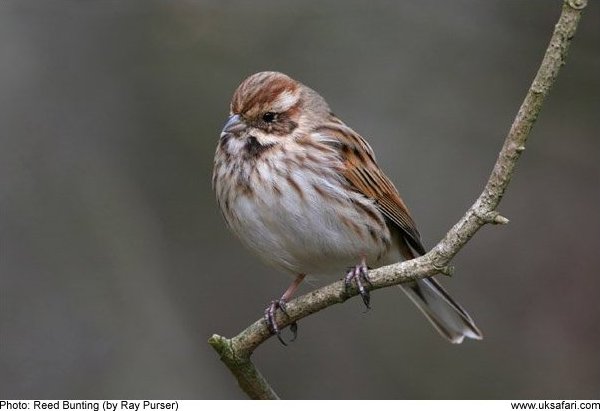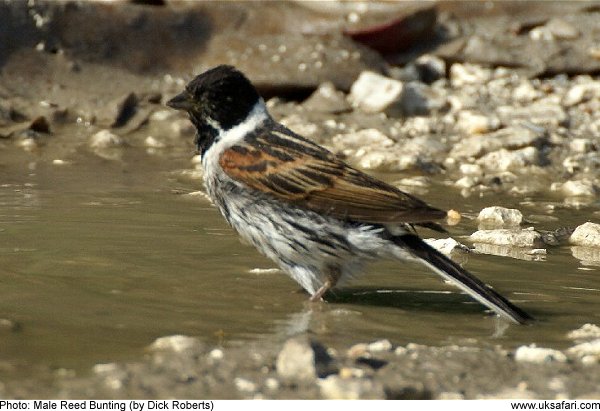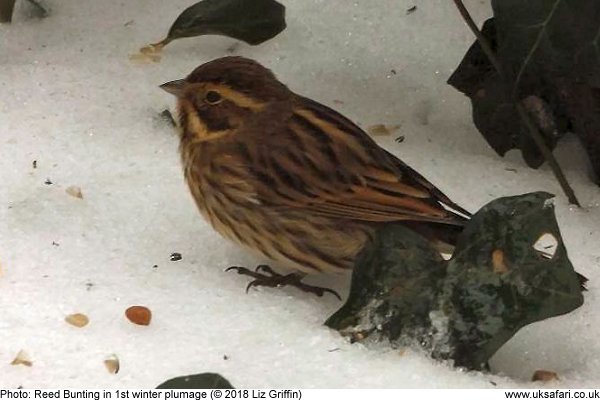 Quick Facts
Quick Facts
Scientific name: Emberiza schoeniclus
Size: Up to 150mm
Distribution: Found throughout the UK
Months seen: All year round
Habitat: Mostly found in wetland areas but can also show up on farmland and in gardens
Food: Seeds and small invertebrates
Special features: Reed Buntings have brown plumage on their backs which is streaked with black. The undersides are greyish-white and streaked with brown. The head of the male Reed Bunting is black in the breeding season, and brown with black streaks later in the year. The female Reed Bunting has a brown head with some darker brown patches on the cheeks. Both the males and females have a white moustache trailing from the beak to the neck. The tail has a V-shaped notch.
Reed buntings are fidgety birds. They tend to flick their tails and wings a lot. When disturbed from their nests they will pretend to be injured, by crawling on the ground with their wings partially open, in order to divert intruders away from the nest.
 Related Pages
Related Pages

 Popular Pages
Popular Pages
Amphibians, Bats, Badgers, Beetles, Birds, Birds of Prey, Bumble Bees, Butterflies, Caterpillars, Creepy-Crawlies, Deadly Spiders, Dolphins, Dragonflies, E-Postcards, False Widow Spiders, Free Newsletter, Frogs, Fungi, Garden Spiders, Glow-Worms, Grey Squirrels, Hedgehogs, House Spiders, Ladybirds, Mammals, Marine Mammals, Moths, Owls, Reptiles, Spiders, Toads, Trees, Wildlife Hospitals
© Copyright 2017 G. Bradley - UK Safari | About Us | Links | Contributors


 Reed Buntings
Reed Buntings




